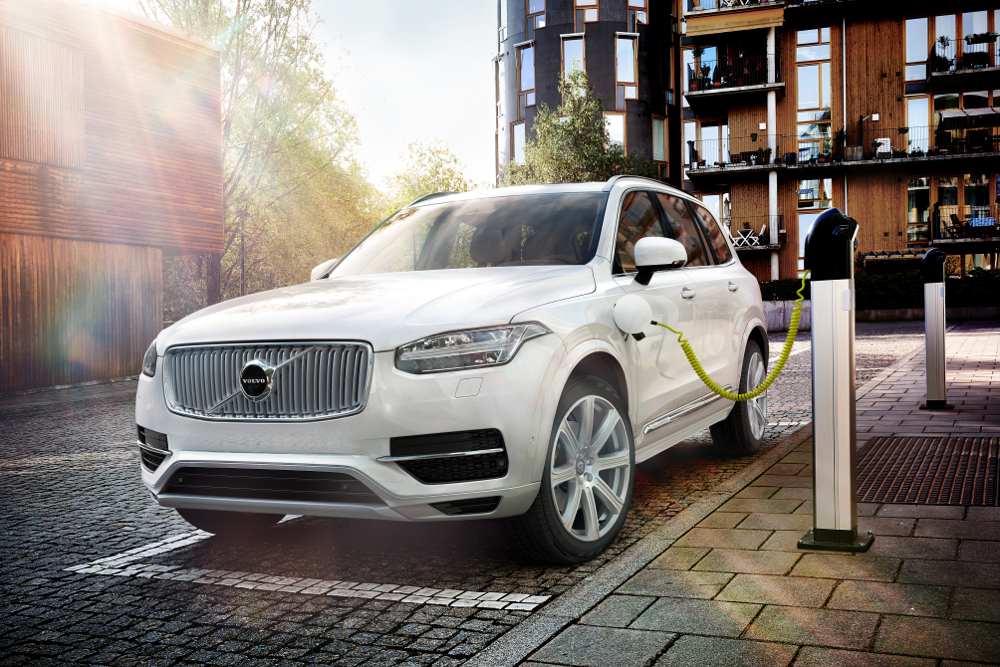We usually think of automotive energy efficiency in terms of miles per gallon, but that isn't adequate for cars with plugs.
For battery-electric cars and plug-in hybrids, the EPA has created a surrogate measure for how many miles a car powered by a battery can go on the amount of energy that's contained in 1 gallon of gasoline.
That's called MPGe, or "Miles Per Gallon Equivalent."
DON'T MISS: 2016 Toyota Prius: Most Fuel-Efficient Car Without A Plug, Ever (Dec 2015)
The ability to drive for appreciable distances on electric power alone usually gives plug-in hybrids an efficiency advantage over internal-combustion vehicles without plugs.
But six plug-in hybrids are actually less energy-efficient than the 2016 Toyota Prius Eco—rated at 56 mpg combined—according to figures published on the EPA's Fueleconomy.gov website.
The dirty half-dozen emphasize performance or luxury over outright efficiency, but at least they introduce their owners to the pleasures of electric driving.
As one advocate said, "plug-in hybrids are the gateway drug for battery-electric vehicles."
McLaren P1
2015 McLaren P1 (18 MPGe)
The McLaren P1 is among the top tier of supercars, but efficiency is not part of its mission.
Its powertrain consists of a 3.8-liter twin-turbocharged V-8 and seven-speed dual-clutch transmission, working with an electric motor to produce a combined 903 horsepower and 663 pound-feet of torque.
ALSO SEE: McLaren P1 Hybrid Supercar: Production Version Revealed (Feb 2013)
The electric motor is used primarily to augment the gasoline V-8, not power the car on its own.
While McLaren has said the P1 can drive on electric power for short distances, the EPA does not rate it as having any electric-only range.
First shown as a concept at the 2012 Paris Motor Show, P1 production was limited to 375 units, with the final car completed in December 2015.
2016 Mercedes-Benz GLE550e
2016 Mercedes-Benz GLE550e (43 MPGe)
The GLE is a renamed version of the SUV formerly known as the Mercedes-Benz ML-Class.
This first-ever plug-in hybrid variant uses a 3.0-liter twin-turbocharged V-6 and seven-speed automatic transmission, with an electric motor sandwiched in between.
MORE: 2016 Mercedes-Benz GLE550e Plug-In Hybrid: Quick Drive (Jul 2015)
Total system output is 436 hp and 479 lb-ft of torque.
An 8.8-kilowatt-hour lithium-ion battery pack provides enough power for 10 miles of electric running, according to the EPA.
But as a big, heavy SUV, the GLE550e is more about less-inefficient luxury than truly efficient driving.
2016 Porsche Cayenne S E-Hybrid
2016 Porsche Cayenne S E-Hybrid (47 MPGe)
Luxury automakers are unleashing a slew of plug-in hybrid SUVs, but Porsche was the first with the Cayenne S E-Hybrid, which first appeared as a 2015 model.
Its powertrain includes a 3.0-liter V-6 with an electric motor wedged between it and an eight-speed automatic transmission.
Combined output is 416 hp and 435 lb-ft of torque.
A 9.4-kilowatt-hour lithium-ion battery pack provides an EPA-rated 14 miles of electric range.
2016 Porsche Panamera S E-Hybrid
2016 Porsche Panamera S E-Hybrid (51 MPGe)
Porsche's other current plug-in hybrid uses the same powertrain as the Cayenne.
However, the Panamera S E-Hybrid is rear-wheel drive, while the Cayenne is all-wheel drive.
The sedan also ekes out an extra mile of electric range in EPA testing over the SUV.
While still lower than the Prius Eco's combined rating, the Panamera's efficiency rating is at least a slight improvement over the 2014 and 2015 models, which were rated at 50 MPGe, with the same electric range.
The Panamera will eventually be supplanted as Porsche's greenest sedan by a production version of the all-electric Mission E concept, due by 2020.
2016 Volvo XC90 T8 Twin Engine plug-in hybrid
2016 Volvo XC90 T8 "Twin Engine" (53 MPGe)
Despite having a much smaller engine than other luxury plug-in SUVs, the Volvo XC90 T8 isn't much more efficient.
The "Twin Engine" powertrain is built around a 2.0-liter 4-cylinder engine that is both turbocharged and supercharged.
It works with an electric motor to produce a combined 400 hp and 472 lb-ft, or 421 hp and 501 lb-ft with the new Polestar Performance Optimization package.
The same powertrain will be offered in the Volvo S90 sedan and V90 wagon, which also share the XC90's Scalable Product Architecture (SPA) platform.
2012 Fisker Karma + Aero L-39 Albatros jet trainer, Hollister Municipal Airport, CA [by Refael Azi]![2012 Fisker Karma + Aero L-39 Albatros jet trainer, Hollister Municipal Airport, CA [by Refael Azi] 2012 Fisker Karma + Aero L-39 Albatros jet trainer, Hollister Municipal Airport, CA [by Refael Azi]](https://images.hgmsites.net/lrg/2012-fisker-karma_100479507_l.jpg)
2012 Fisker Karma (54 MPGe)
The Fisker Karma was actually intended as an extended-range electric car that would spend most of its time operating on battery power.
Its General Motors-sourced 2.0-liter turbocharged 4-cylinder engine was designed to act as a generator, somewhat similar to the Voltec powertrain of the Chevrolet Volt.
The Karma was in fact rated at 33 miles of electric range by the EPA, despite its low overall efficiency.
The luxury sedan hasn't been built since 2012, but new owner Wanxiang hopes to bring it back later this year as the Karma Revero.
While some changes are expected, the new version likely won't improve much on the old model's ratings.
_______________________________________________












